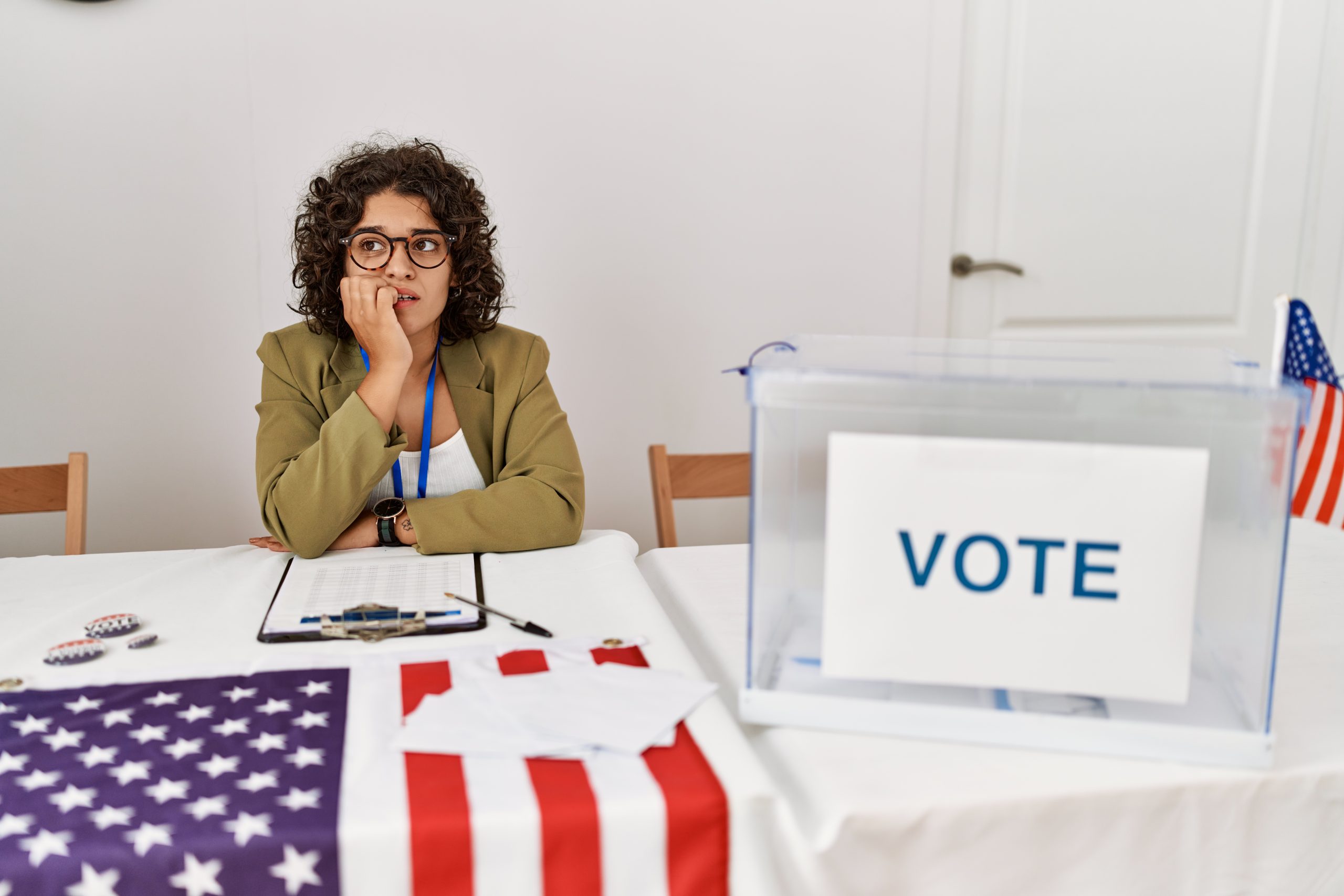Are you curious about which minor party has not influenced platforms and elections in the US? Well, you’re in for an interesting ride. While it may seem like minor parties have little impact due to the dominance of the Democrats and Republicans, history tells a different story. Take, for example, the Green Party, which has made waves with its focus on environmental issues. However, don’t be fooled into thinking that minor parties always have a seat at the table. They face numerous challenges, including limited media coverage, lack of campaign funding, and restrictive ballot access laws. So, buckle up and join us as we delve into the world of minor parties and explore their potential impact on the political landscape of the United States.
Dominance of Two Major Parties
You need to understand the dominance of two major parties in the US political system. The historical origins of this dominance can be traced back to the mid-1800s, as the Democrats and Republicans have fielded all the candidates who have become president since then. This dominance can be attributed to the political process and the nature of the parties themselves. While the United States is home to more than 54 political parties, only the Democrats and Republicans have achieved significant success.
The impact of these two major parties on policy is immense. They shape public opinion by presenting contrasting ideas about politics and policy. The parties’ influence extends to their respective party platforms, which outline their positions on various issues. Third parties have had some success in influencing policy and political debate, despite their minor presence in Congress. For example, the Socialists popularized the women’s suffrage movement and advocated for child labor laws.
While the two-party system has been dominant for many years, alternatives to this system have been proposed. Some argue for proportional representation systems, similar to those used in most European democracies, which allow multiple parties to flourish. Others suggest reforms to the current system to give third parties more visibility and equal opportunity. Understanding the dominance of two major parties is crucial in analyzing the US political landscape and considering possible alternatives.
Success and Influence of Third Parties
The success and influence of third parties in the US political system can be seen through their major impact on policy and political debate, despite their minor presence in Congress. Third parties have historically achieved significant achievements in shaping public opinion and impacting major party platforms. They have been instrumental in introducing important ideas such as the concept of a 40-hour work week, which led to the creation of the Fair Labor Standards Act of 1938. Third parties have also played a vital role in raising neglected or excluded issues, changing the political debate, and influencing policy.
To further illustrate the influence of third parties, consider the following table:
| Influence on Policy | Historical Achievements | Role in Shaping Public Opinion |
|---|---|---|
| Introduction of the 40-hour work week | Popularization of the women’s suffrage movement | Raising neglected or excluded issues |
| Advocacy for child labor laws | Promotion of environmental conservation | Changing the political debate |
| Push for campaign finance reform | Proposing healthcare reform alternatives | Influencing policy decisions |
In terms of electoral strategies, third parties often face obstacles such as the winner-take-all system in most states, limited media coverage, and lack of campaign funding. However, despite these challenges, third parties continue to have a significant impact on the US political landscape. Their influence on policy, historical achievements, role in shaping public opinion, and impact on major party platforms cannot be denied. While they may not have achieved widespread electoral success, their contributions to political discourse and policy development should not be underestimated.
Obstacles Faced by Third Parties
Despite the numerous obstacles faced by third parties in the US political system, they continue to have a significant impact on policy and political discourse. These obstacles include the winner-take-all system in most states, which disadvantages third party candidates, federal campaign finance laws, rules for presidential debates, and lack of media attention. Additionally, significant paperwork and signature collection are required for third party candidates to appear on the ballot. Lack of media coverage and campaign funding further hinder third parties, as they struggle to gain sufficient visibility and financial support for their campaigns. These challenges often result in third party candidates having to fund their own campaigns and find alternative means to raise the millions of dollars required for a successful campaign. Despite these obstacles, third parties play a crucial role in raising neglected or excluded issues, changing the political debate and policy, and invigorating voter interest. Their impact on policy and political discourse cannot be underestimated.
Lack of Media Coverage and Campaign Funding
The lack of media coverage and campaign funding poses significant challenges for minor parties in the US political system. These limitations hinder their ability to gain visibility and compete effectively against the two major parties. Media bias and the focus on the Democratic and Republican candidates often overshadow the campaigns of minor party candidates. This lack of coverage prevents voters from being fully informed about the alternative options available to them.
Additionally, minor parties struggle to secure adequate funding for their campaigns. Unlike the major parties, which have access to substantial financial resources, minor parties often have to rely on grassroots movements and alternative fundraising methods. This can make it difficult for them to raise the millions of dollars needed to run a successful campaign.
Social media has become an important tool for minor parties to overcome some of these challenges. It allows them to reach a wider audience and engage with supporters directly. However, social media impact alone is not enough to compensate for the lack of mainstream media coverage.
Furthermore, voter apathy also plays a role in the limited success of minor parties. Many voters are hesitant to support a candidate who they believe has little chance of winning. This mindset further marginalizes minor parties and reinforces the dominance of the two major parties.
Two-Party System and Stability
Throughout the history of the United States, the two-party system has provided stability and served as the foundation for the American political landscape. This system has had a significant influence on policies, shaped by historical context, public opinion, party loyalty, and the electoral system. Here are four key aspects of the two-party system’s impact:
- Influence on policies: The two major parties, Democrats and Republicans, have developed distinct ideologies and policy platforms. This competition between the two parties has led to a range of policy options for voters to choose from, reflecting the diverse interests and values of the American population.
- Historical context: The two-party system emerged in the early years of the United States and has evolved alongside the growth and development of the country. It has adapted to changing social, economic, and political circumstances, providing continuity and stability in the face of challenges and crises.
- Public opinion: The two-party system reflects and responds to the preferences and beliefs of the American people. Public opinion shapes party platforms and candidate selection, as parties strive to appeal to the majority of voters in order to win elections.
- Party loyalty: The two-party system fosters a sense of loyalty and identification among voters, who align themselves with one of the major parties based on shared values and beliefs. This loyalty contributes to the stability of the system, as it provides a solid base of support for each party.
The two-party system has played a crucial role in maintaining stability in the American political landscape. While it has its limitations and critics, it continues to be the dominant framework for political competition and governance in the United States.
Functions and Types of Minor Parties
Minor parties in the United States serve various functions and can be categorized into different types based on their characteristics and approaches. These parties have a limited impact on the overall political landscape compared to the dominant two parties, but they still play important roles. One function of minor parties is to raise issues that are often ignored by the major parties. They act as catalysts for change by bringing attention to important but neglected topics. Additionally, minor parties can enact policies through third-party initiatives, which can influence the political debate and potentially lead to policy changes. Another function of minor parties is to invigorate voter interest by offering alternative choices and perspectives. However, minor parties can also be spoilers in elections, potentially splitting votes and affecting the outcome. When it comes to types of minor parties, there are several categories. Some minor parties endure for a long time and resemble major parties in running candidates, but they are less successful in getting candidates elected. Others are single-issue minor parties, focusing on specific policy areas. There are also candidate-centered minor parties that revolve around a particular personality. Fusion minor parties combine the platforms of multiple parties. It is important to note that minor parties often face campaign finance restrictions, which hinder their ability to compete with the major parties.
Media Coverage of the Tea Party
Media coverage played a significant role in shaping the perception and understanding of the Tea Party movement. During the Tea Party protests against government health care reform, major news organizations focused on various aspects of the movement, including its evolution, positions, membership, and spokespersons. The coverage of Tea Party rallies garnered extensive attention from mainstream media and political bloggers. However, the media bias became evident in their approach.
- CNN aggressively interviewed average citizens participating in Tea Party protests, often challenging their positions, while Fox News assumed the role of a Tea Party cheerleader and encouraged people to join the movement.
- Accusations of anti-Obama racism by Tea Party protestors were reported by CNN and network news outlets, prompting criticism. Fox News, on the other hand, took a supportive stance and encouraged Tea Party protestors.
- Some Tea Party signs at rallies were racially charged, leading to criticism from the movement’s leaders. However, the majority of signs focused on issue positions without racially charged messages.
- Studies have shown that conservative media outlets framed the Tea Party as fringe or extreme, while local organizers felt that traditional news media coverage of their groups was fair.
The media coverage of the Tea Party movement highlighted the political polarization in the country and influenced public opinion on the grassroots activism.
Challenges Facing Minor Parties
When it comes to the challenges faced by minor parties, you may be surprised to learn about the numerous obstacles they encounter in trying to gain traction and influence in the US political system. Third parties face challenges such as ballot access and campaign finance. In order to appear on the ballot, third party candidates must go through significant paperwork and signature collection requirements. This can be time-consuming and costly, making it difficult for them to even be considered as viable options for voters.
Minor parties also face disadvantages such as lack of resources and lack of support. Unlike the major parties, minor parties often struggle to attract the financial backing and organizational support necessary to run successful campaigns. This lack of resources and support hinders their ability to effectively compete with the major parties and gain public attention.
Furthermore, third parties also have to overcome obstacles such as voter perception and the winner-take-all system. Many voters perceive third parties as having little chance of winning, which leads to a lack of support and limited representation in government. Additionally, the winner-take-all system in most states disadvantages third party candidates, as only the highest vote getter in a district gains a seat in office. This further diminishes the chances of third parties gaining a foothold in the political system.
Campaign Finance Laws and Ballot Access
To overcome the challenges they face, third parties in the US must navigate campaign finance laws and ballot access requirements. Campaign finance restrictions and public funding limitations create financial disadvantages for third parties, making it difficult for them to compete with the major parties. They often have to fund their own campaigns and struggle to raise the millions of dollars required for a successful campaign. Additionally, third party candidates must fulfill significant paperwork and signature collection requirements to appear on the ballot, which can be a time-consuming and resource-intensive process. Due to these obstacles, third parties often lack the necessary resources and support to effectively challenge the dominance of the two major parties.
Lack of Established Organizations and Resources
Despite their efforts, minor parties in the US often struggle to establish strong organizations and obtain the necessary resources to effectively compete in elections. One major challenge they face is the lack of infrastructure and limited resources. Unlike the major parties, minor parties do not have well-established organizations with permanent headquarters and dedicated staff. This lack of organizational foundation creates barriers for minor parties, as they struggle to conduct polls, gather political intelligence, court the press, and manage campaigns.
Financial disadvantage is another significant obstacle for minor parties. They often face fundraising challenges, as they are not able to access the same level of financial support as the major parties. Without sufficient funding, minor parties find it difficult to run effective campaigns, advertise their platforms, and reach a wider audience.
Furthermore, minor parties are at a disadvantage when it comes to ballot access. They must navigate complex procedures and meet strict requirements set by the major parties, making it harder for them to appear on the ballot. This limits their visibility and reduces their chances of gaining public support.




